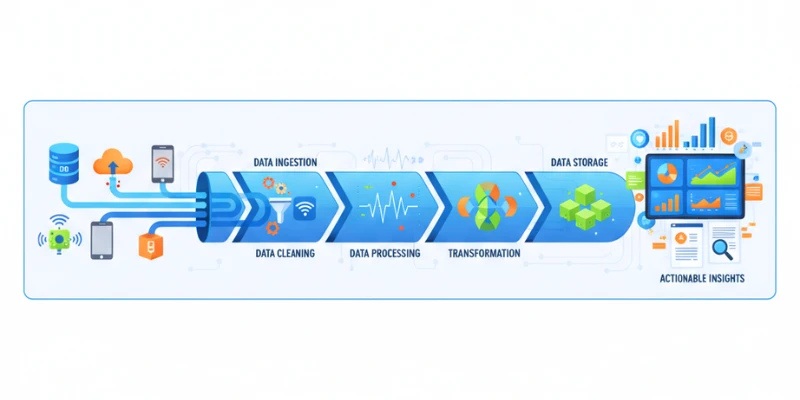
Every organization generates massive amounts of data from different sources. However, this raw data alone has little meaning until it is processed, analyzed, and transformed into insights that support decision-making. Learning how this transformation happens through a data pipeline is essential, and a Data Analyst Course in Trivandrum at FITA Academy can provide the skills needed to understand and manage these processes effectively. Understanding how a data pipeline works helps businesses unlock the real value hidden in their data.
What is a Data Pipeline?
An organized procedure that transports data from its source to a location where it may be kept, examined, and utilized for business intelligence is known as a data pipeline. It connects different systems, allowing data to flow smoothly between them. The pipeline ensures that data is collected, cleaned, transformed, and made ready for reporting or advanced analytics.
In simple terms, a data pipeline acts like a conveyor belt that takes raw materials, in this case raw data, and prepares them for use in creating meaningful products such as dashboards, reports, and predictions. A Data Analytics Course in Kochi can help learners understand how to manage and optimize these pipelines effectively.
Key Stages of a Data Pipeline
Data Collection
The process starts by collecting information from various sources. These sources can include customer databases, sensors, websites, mobile apps, or third-party platforms. The goal is to capture all relevant information that reflects business activities or customer behavior.
Data Ingestion
Once collected, the data is moved into a centralized location, often called a data warehouse or a data lake. This stage focuses on ensuring that data is imported efficiently and securely, often in real time or through scheduled batches.
Data Processing and Cleaning
Raw data is rarely perfect. It often contains errors, duplicates, or missing values. Data processing involves cleaning and standardizing the data to make it reliable. Consistent and accurate data ensures that insights derived from it are trustworthy.
Data Transformation
During transformation, the data is organized into formats suitable for analysis. It may involve combining different data sets, filtering unnecessary information, or aggregating data for easier interpretation. Enrolling in a Data Analyst Course in Pune can help you learn how to handle these transformation processes efficiently.
Data Storage
After transformation, the data is stored in systems designed for quick access and analysis. These systems may be located on-site or hosted in the cloud, based on the requirements of the organization.
Data Analysis and Visualization
In the final stage, data analysts and business users explore the processed data to uncover trends, measure performance, and make informed decisions. Tools for visualization like dashboards and charts aid in conveying insights clearly to stakeholders.
Why the Data Pipeline Matters
A well-structured data pipeline saves time, reduces manual work, and improves data accuracy. It also enables companies to make choices based on real-time data. Companies that invest in efficient data pipelines gain a competitive advantage because they can respond faster to market changes and customer needs.
Turning Data into Business Value
Raw data only becomes valuable when it leads to action. Establishing a dependable data pipeline enables companies to convert intricate and disorganized data into insights that foster growth, boost efficiency, and improve customer experiences. The key is not just collecting data but turning it into a strategic asset that powers smarter decisions every day. Anyone looking to master these skills can benefit from a Data Analytics Course in Gurgaon to understand how to create and manage effective data pipelines.
Also check: Career Opportunities in Data Analytics and Business Intelligence